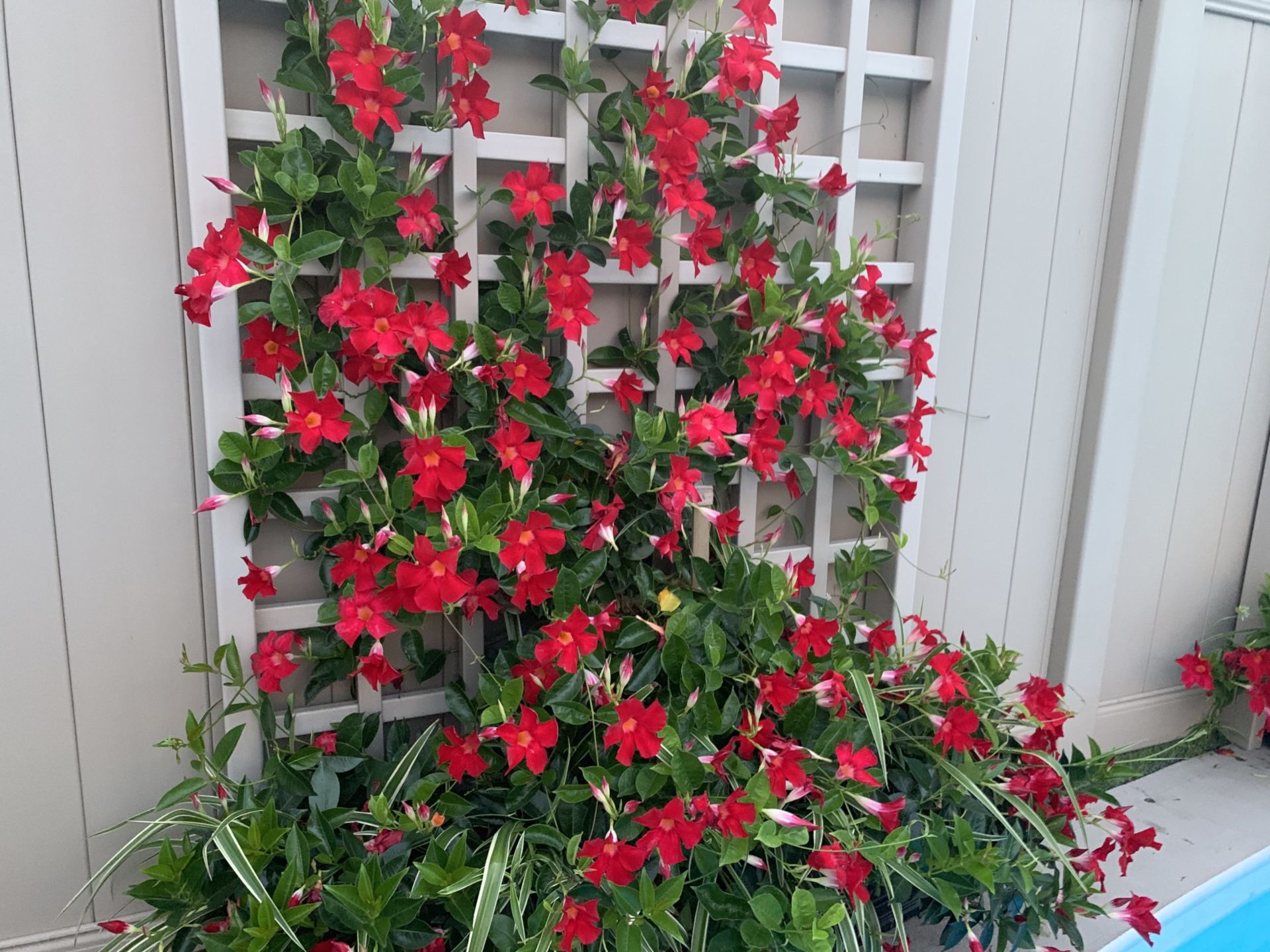Good Annuals
Garden Clippings for October 5, 2019
Last week I shouted the praises of Lantana plants. This annual flower is a winner in our backyard garden and performs just as well in pots as it does in our flower beds. Other plants that Cheryl and I will be sure to plant next year are Hibiscus, Coleus, Marigolds, Vinca and Asparagus Fern.
As for hanging baskets, this gardener is almost ready to call it quits. For the umpteenth year, we brought home a few assorted baskets in late May for another trial run. They looked absolutely gorgeous. Most impressive were the varieties of Petunias that smothered the pot in shades of white, pink and red.
We hung our hanging baskets in our usual location, at the edge of the overhang of the garden shed, otherwise known as the tabernacle. We fed the baskets faithfully and watered them every evening. They continued to look great until the middle of hot August when I must have missed one evening of water. They never recovered.
Hanging baskets are tricky. Professional greenhouse growers plant them by the thousands in preparation for Mother’s Day. With precision they feed and water the baskets until they look perfect at which time they are shipped to big box warehouses and grocery stores, knowing full well that the average gardener has little hope in keeping them looking good.
I have learned long ago that hanging baskets need to be sizable for me to enjoy success. The small 8-inch pots won’t work for me unless I bump them up to a 10 or 12 inch pot size.
Hanging baskets need water and fertilizer. Water daily and give enough water so the excess comes out of the bottom of the pot. For fertilizer, I offer the baskets 2 applications of slow release plant food along with biweekly doses of 15-30-15 water soluble plant food.
Here’s my top ten recommendations for annual plants in hanging baskets:
Dipladenia: this colourful trailing and climbing vine can withstand heat, sun, wind and can also survive if the gardener forgets to water for a day or two. Leaves are shiny and blooms are white, pink or red. Grows well in hanging baskets, containers and in garden beds.
Begonia: For shady spots, Begonias are a top choice. Begonias love fertilizer and they want their flowers cut off after they have done their duty.
Black Eye Susan: This hardy yellow sun loving annual plant will twine its way up the wires or chain as well as cascade over the edge.
Lantana: For dependable brightly coloured blooms be sure to try the sun loving Lantana. Like Dipladenia, Lantana is hardy and grows well in pots, baskets and garden beds. A good choice for attracting butterflies and hummingbirds.
Lobelia: This wonderful plant is a great spiller for the edge of a basket. Lobelia, with its bright blue flowers does well until temperatures are consistently hot. In July, replace it with a heat loving substitute such as Portulaca.
Million Bells: this relative of the common Petunia will remain showy as long as you give it sun and moist soil. If it turns crisp because you have gone away for the weekend, cut it way back and give it a few weeks.
Geranium: This plant, properly called Pelargonium is a faithful performer as long as it receives sun. Dead head the spent blooms to encourage new blooms.
Portulaca: You won’t find Portulaca for sale in May because it does not put on a show until heat and sun arrive. Buttercup type flowers in yellow, orange and pink appear in mid-summer. Portulaca thrives on neglect.
Boston Fern: A most popular foliage plant that loves humidity and shade. If you forget to water Boston Fern it will punish you with browning leaves. For a more forgiving fern that tolerates neglect, use Asparagus Fern.
Verbena: Long lasting blooms in white, pink, and red are standard fare for Verbena. Verbena spreads and trails all summer. Prune the ends of the stems if you want a compact busy plant.


